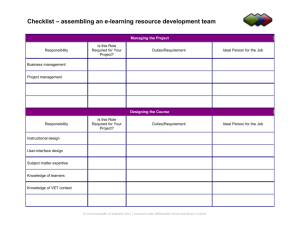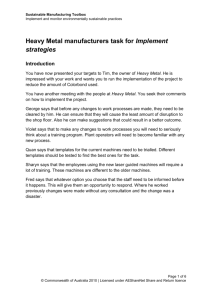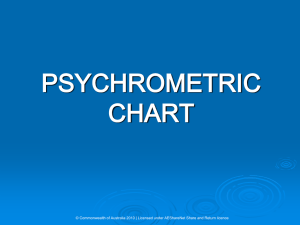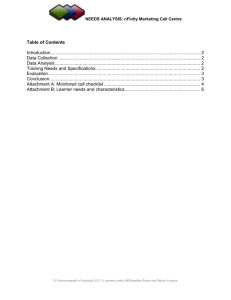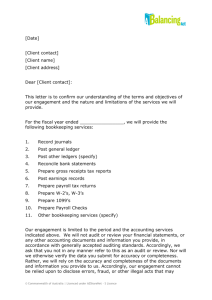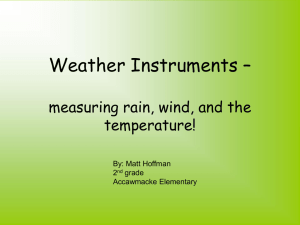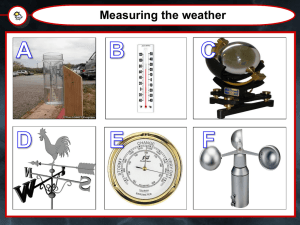presentation on temperature measurement instruments (PPT 1.9MB)
advertisement
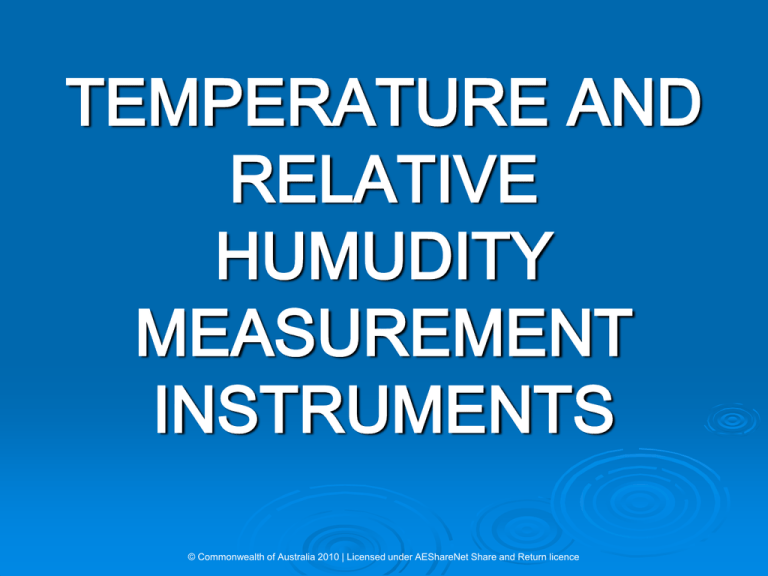
TEMPERATURE AND RELATIVE HUMUDITY MEASUREMENT INSTRUMENTS © Commonwealth of Australia 2010 | Licensed under AEShareNet Share and Return licence Hello, I want to show you the various instruments we use at Fresh or Freezing to measure temperature and relative humidity and talk about how we maintain and test them. We use different instruments to measure temperature and relative humidity. © Commonwealth of Australia 2010 | Licensed under AEShareNet Share and Return licence Let’s look at thermometers first. This is a dial thermometer. This is a glass stem thermometer. These are electronic solid state thermometers. Your workplace may use some or all of these. © Commonwealth of Australia 2010 | Licensed under AEShareNet Share and Return licence For a thermometer to be of use it must be accurate. There are two ways to test a thermometer for accuracy: An ice and water mix (O C) and compare your readings. Steam (100 C) and compare your readings. © Commonwealth of Australia 2010 | Licensed under AEShareNet Share and Return licence This is an ice and water test. We normally work on systems that are close to 0 °C. So it is more sensible to use the ice and water method to check/calibrate thermometers. Be very careful when testing as both methods are dangerous – you can get cold burns as well as hot burns. © Commonwealth of Australia 2010 | Licensed under AEShareNet Share and Return licence When taking readings, be careful. You will be working on an operating unit. You need to be aware of rotating machinery, as well as the fact that some components will be very hot or cold. The techniques and sometimes the locations for taking temperatures will vary from thermometer to thermometer. You need to be careful to ensure that you make sure the sensing element or bulb is actually in contact with the component whose temperature you are trying to measure. © Commonwealth of Australia 2010 | Licensed under AEShareNet Share and Return licence There are a few points to remember about measuring relative humidity. To measure relative humidity both wet bulb and dry bulb thermometers are needed. Usually both types of thermometers are mounted in a frame with the wet bulb thermometer covered with a wet wick. A device mounted in a common frame is called a sling psychrometer. These are available in a number of styles using either normal bulb type thermometers or a digital type thermometer. Take care to only use distilled water for wetting the wick as non-distilled water will give incorrect readings because of impurities in the water. © Commonwealth of Australia 2010 | Licensed under AEShareNet Share and Return licence Sling psychrometers are usually rotated at approximately two to three times per second. But check the instructions for each sling psychrometer, just to make sure of the rotation rate required. © Commonwealth of Australia 2010 | Licensed under AEShareNet Share and Return licence This is a digital psychrometer. © Commonwealth of Australia 2010 | Licensed under AEShareNet Share and Return licence Most of the instruments are fragile so we need to store and maintain them properly so they give us accurate readings. I always make sure they are clean and placed in their correct storage place when I’ve finished using them. Cleaning normally means cleaning the sensing bulb of the thermometer. This helps control contamination between products as well as providing accurate readings. © Commonwealth of Australia 2010 | Licensed under AEShareNet Share and Return licence

